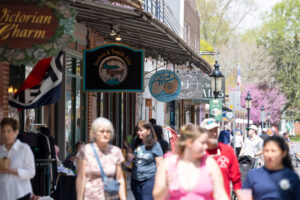Source: Daily Times
The Worcester County Commissioners agreed on a plan Tuesday to loosen restrictions on commercial business, making it easier for signature franchise restaurants like Cracker Barrel or McDonald’s to set up shop.
Previous legislation made commercial construction in Worcester County a nightmare, said Mark Cropper, a member of the task force that drafted the new ordinances.
“Even if you had a building that fit the guidelines, and matched every other franchise location in the country, you still couldn’t build it,” Cropper said.
The new legislation addresses an issue in the guidelines for commercial construction, over 10,000 square feet in the county, which formerly demanded the building match one of three approved architectural styles, meant to reflect the traditions of the county.
These include agricultural, basic geometric buildings with large, rectangular windows and sloped gable roofs; seaside, simple geometric buildings with an emphasis on symmetry and wood as a dominant feature and town center, simple rectangular buildings typically with a brick facade.
Phyllis Wimbrow, deputy director of development review and planning, said that these restrictions effectively prevent certain franchises from opening up shop in the county.
“With a lot of franchises, their buildings are basically signage, we all know what a Cracker Barrel looks like, or McDonald’s with the golden arches,” Wimbrow said. “The problem is that if those franchise designs don’t fit into one of these three architectural styles, they aren’t allowed to come here.”
While Wimbrow stressed there is no current plan for a Cracker Barrel to come to Worcester County, Commission President Madison Bunting joked that if the task force could ensure that, any request they had would be granted.
“If you can promise to bring a Cracker Barrel here, we’ll agree with whatever you want,” Commission President Madison Bunting said.
In an effort to bring more economic development to Worcester County, a task force was assembled to address the commercial plans in February 2016. The task force was composed of people across the Worcester County economic board — from farmers to engineers and business owners, all seeking a resolution which both encourages economic growth and protects county traditions, according to Proper.
Among alterations to several definitions, a crucial change to the county ordinances removed mandatory clauses from business guidelines. In other words, rather than a new business or franchise being told they must adhere to these architectural styles, they are now strongly encouraged.
Commissioner Chip Bertino said he was concerned that if businesses have no obligation to adhere to these architectural styles, they have no reason to do so.
“Heavily encouraged does not mean jack if you don’t have to follow the guidelines,” Bertino said.
However, the new clauses are not going to allow businesses to build whatever they want without any recourse from the county, but instead encourages an open dialogue between potential builders and the county, said Wimbrow, deputy director of development review and planning.
“They’re not allowed to get away with not giving anything, it’s a collaborative effort,” she said.
While the new adopted guidelines are mostly encouragements to conform, rather than strict requirements, all new buildings are still required to conform to the architectural traditions of the town, in a general sense. Meaning, while they do not have to meet every required measure to fit perfectly, they are required to fit in. For example, a Cracker Barrel would now be able to generally fit into the county’s architecture, when before it would be prohibited, Wimbrow said.
“When these codes were adopted, there was a purpose, but with time, there was a need for change,” Commissioner Joe Mitrecic said. “This resolution could help bring new businesses that were prohibited before.”
Along with changes to commercial regulations, the task force offered a resolution to traffic issues in the Route 50 corridor, between Holly Grove Road and Seahawk Road, by establishing a service road between the two.
As economic growth and business development continues in the corridor area, the county hopes to protect the flow of traffic to Ocean City during the busy summer months. The resolution aims to minimize the use of Route 50 for local traffic to increase the fluid movement of tourists coming from across the bay bridge.
This plan builds upon a 1989 proposal, which overestimated the economic growth in the corridor in the following 28 years, according to Wimbrow. Now, as projections indicate a possible doubling of population size in Worcester County by 2030, and a boom in commercial businesses in the corridor, the new resolution hopes to encourage service roads, separating commercial areas from the highway itself.
One measure presented to encourage that is an increase of right of way access on Samuel Bowen Boulevard, from 50 feet to 100 feet, with anything above needing to be run past the planning commissioners, Wimbrow said.
While not mandatory, once these service roads are constructed, land owners connected by the roadway are encouraged not to use Route 50. Effectively, this would lower the traffic burden in the summer months to just those traveling to and from Ocean City and other non-local traffic.
The resolution was unanimously accepted by the commissioners.
“The purpose of this task force was to encourage economic development in the country,” Cropper said. “We had to look at things from a more practical, pragmatic perspective, and figure out what is going to be best for the future of the county.”





